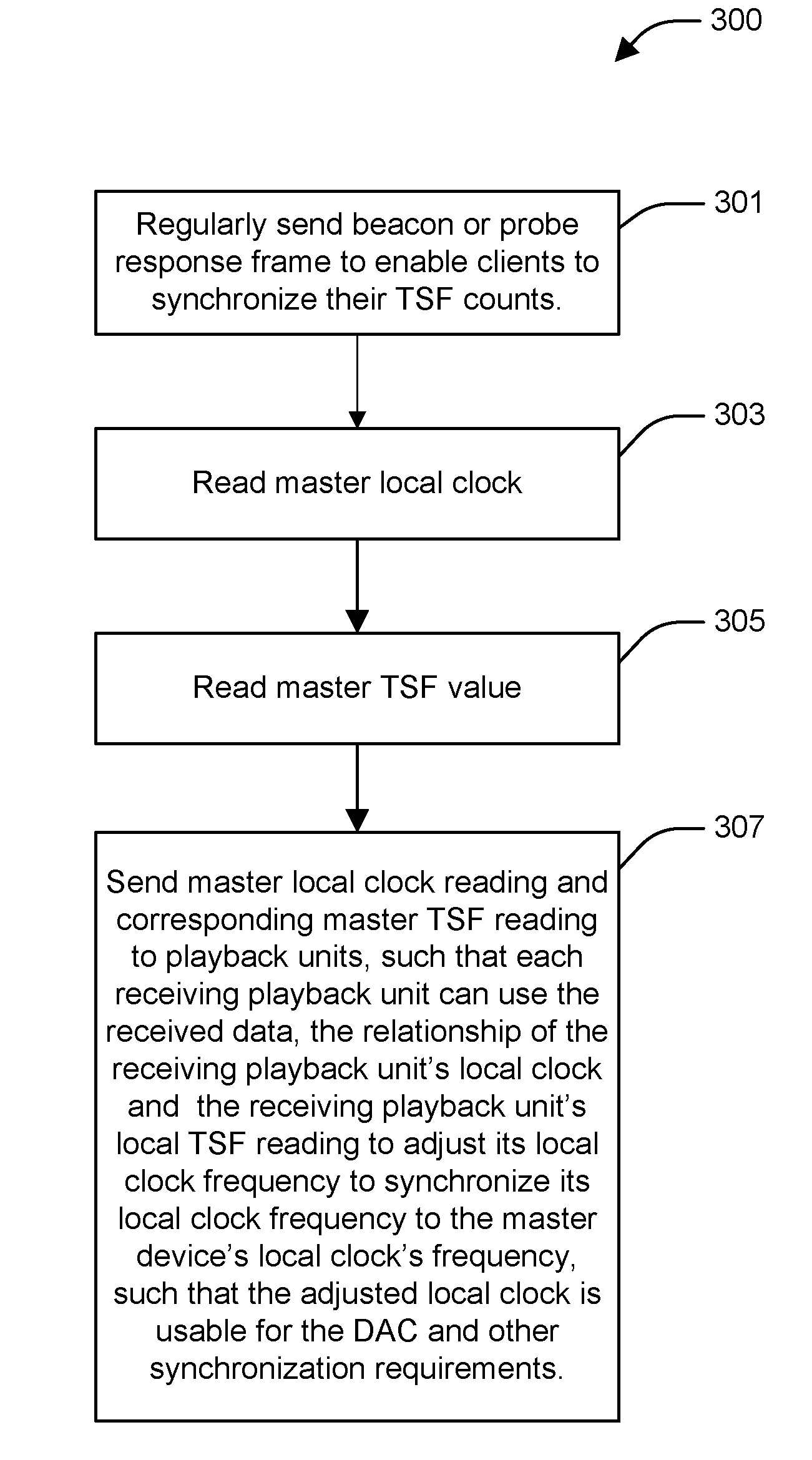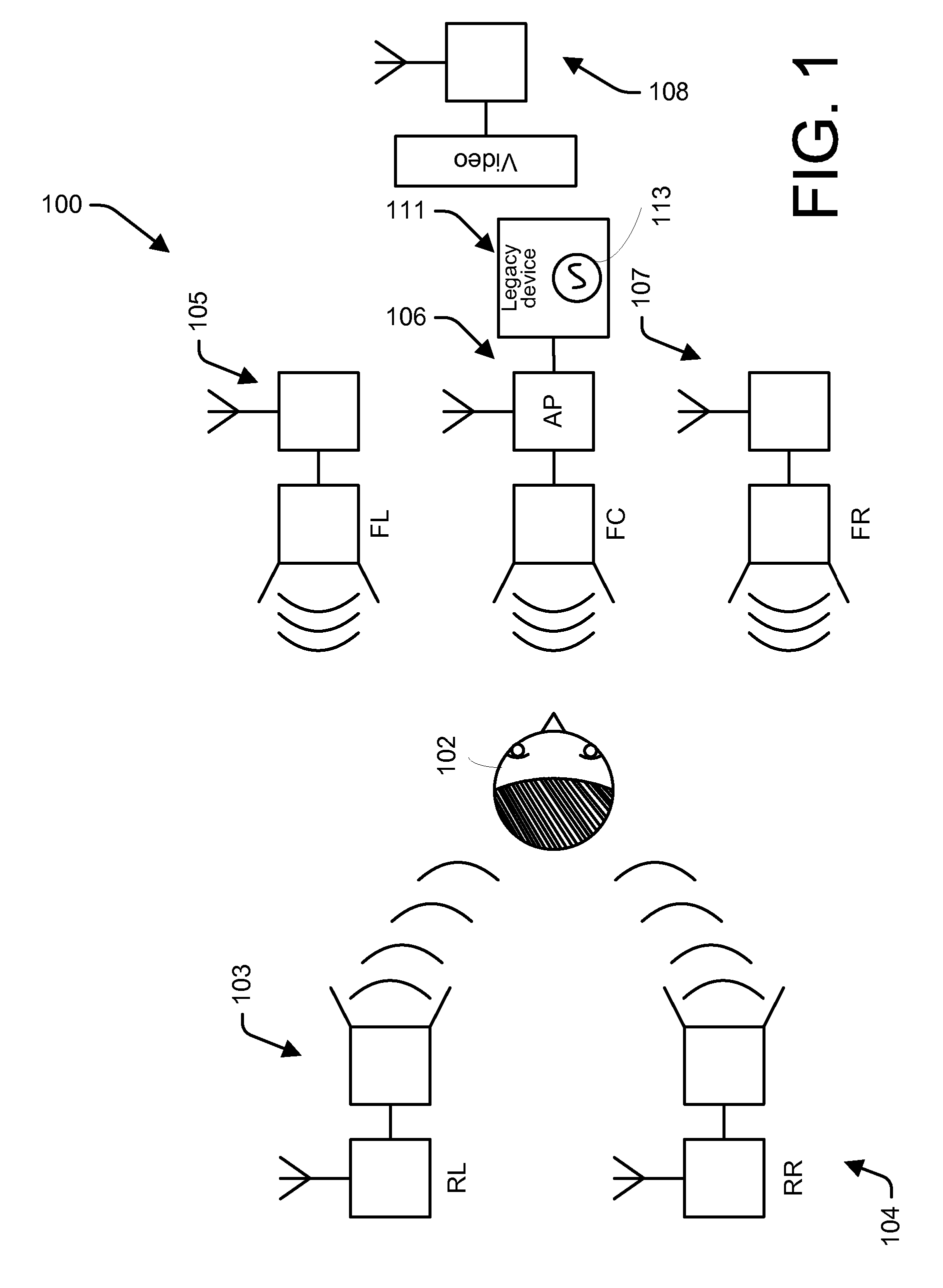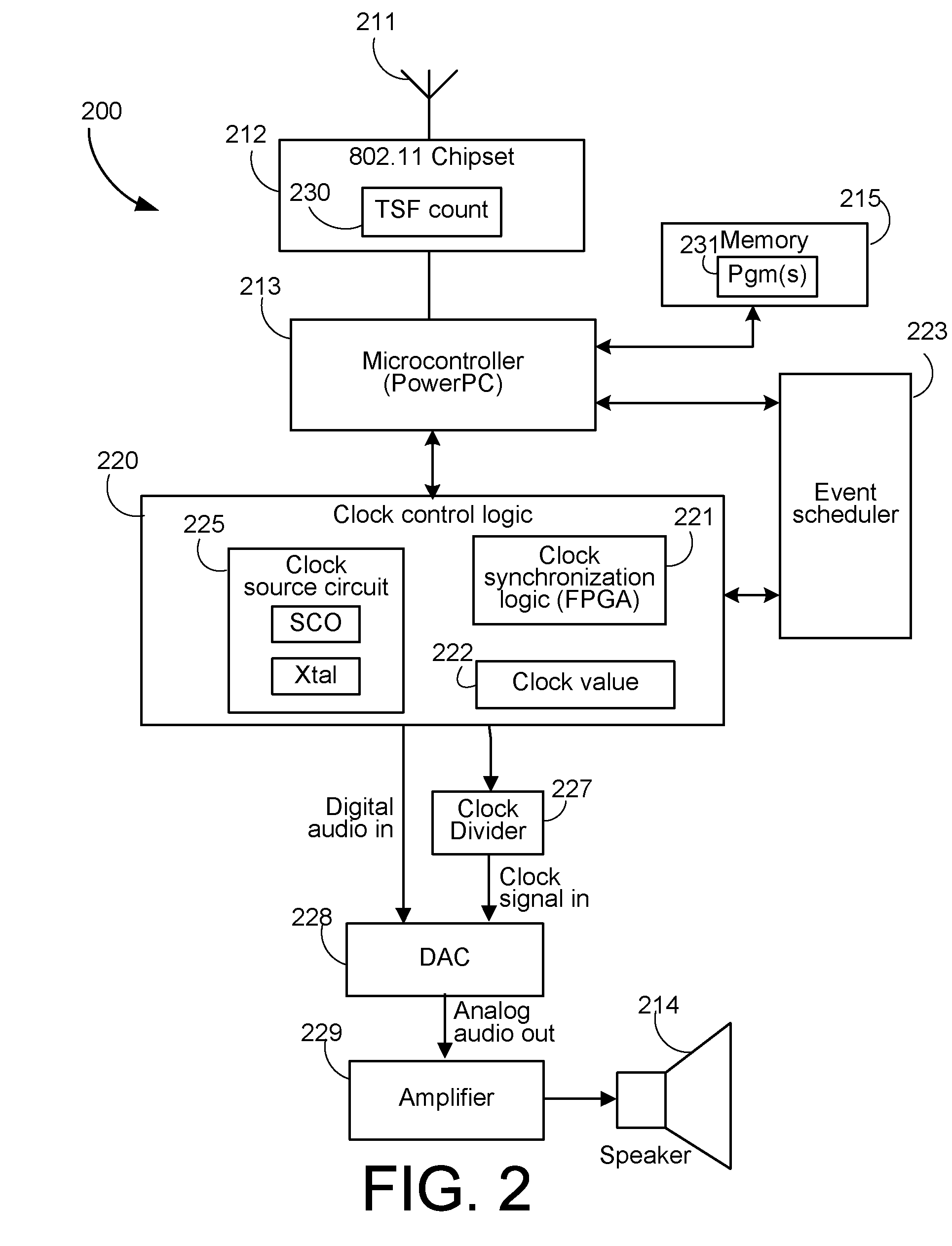Media data synchronization in a wireless network
- Summary
- Abstract
- Description
- Claims
- Application Information
AI Technical Summary
Benefits of technology
Problems solved by technology
Method used
Image
Examples
embodiment 300
[0065]FIG. 3 shows a flowchart of one method embodiment 300 operating in the master device such as device 200 that in one embodiment is in playback unit 106. In one embodiment, the master device is also the IEEE 802.11 access point.
[0066] In 301, the method includes the access point, e.g., master device 106 regularly, although not necessarily in a periodic fashion, sending beacon frames to enable client stations to synchronize their TSF counts. 301 also includes the master device 106 optionally sending one or more probe response frames in response to receiving a corresponding probe request frame.
[0067] In the alternate arrangement of a separate access point, 301 is replaced by the master device 106 being a client device of the access point and receiving one or more beacon frames or probe response frames from the access point to synchronizing its TSF count.
[0068] In 303, the method 300 reads the master's local clock counter value, e.g., from the clock value 222 of the clock control...
embodiment 400
[0072]FIG. 4 shows a simplified flowchart of a method embodiment 400 operating at a client device, e.g., client device 103 acting as a slave device. The method is implemented, e.g., as software in the memory of the client device, e.g., memory 215 in the case the client device 106 follows the architecture 200 of FIG. 2. In one embodiment, some of the method of 400 is implemented by the clock control logic 220 as a combination of software executing in the microcontroller and logic in the clock synchronization logic 221.
[0073] In 401 the slave device receives one or more beacon frames or probe response frames sent by the access point, e.g., master device 106 in the arrangement of FIG. 1, or the access point 901 in the example arrangement of FIG. 9, and synchronizes its local TSF, e.g., local TSF count 230 in the case the client as the architecture shown in FIG. 2.
[0074] In 403 the slave device 103 receives data sent by the master device 106 indicative of a master clock count and the c...
PUM
 Login to View More
Login to View More Abstract
Description
Claims
Application Information
 Login to View More
Login to View More - R&D
- Intellectual Property
- Life Sciences
- Materials
- Tech Scout
- Unparalleled Data Quality
- Higher Quality Content
- 60% Fewer Hallucinations
Browse by: Latest US Patents, China's latest patents, Technical Efficacy Thesaurus, Application Domain, Technology Topic, Popular Technical Reports.
© 2025 PatSnap. All rights reserved.Legal|Privacy policy|Modern Slavery Act Transparency Statement|Sitemap|About US| Contact US: help@patsnap.com



